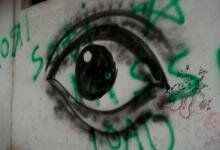Maneki Neko, or the Lucky Cat
Right paw = money, left paw = customers
Edward Said, in his discussions of Orientalism, was quite furious with the exoticization and the “othering” of people who aren’t from the West.
When he was not brandishing his pen to write fiery opinions on the divide between the “exotic” Orient and the “dominant” Occident, he would literally be throwing stones in support of the Palestinian people. The stereotype of the “token Asian” isn’t just something you’ll find on TV or cinema. The Oriental is somewhat reduced and objectified by centuries of colonization, domination, and force. So everything “Asian” pretty much becomes a “token.”
Then again, let’s not squander a perfectly good rant on theories.
The Filipino New Year is a very interesting mixture of the Western calendar, indigenous pamahiin (superstition), and Oriental custom. While 2010 is the Year of the Metal Tiger, the numerology wouldn’t apply properly until the Lunar New Year, which falls on February 14 this year. Yet a trip to the lucky charm store would have Chinese ba gua sold alongside Japanese Maneki Neko (“beckoning cat” or fortune cat). Yes, those hypnotic lucky cats found in almost every store in the country.

Right paw = money, left paw = customers. Yet a damn wouldn’t really be given, as long as the paw beckons, most of which are mechanical contraptions activated with a careful downward swing of the upraised paw. For hours on end, Maneki Neko waves, and yet fades into the background, as the business for the day is done on the counter, the storefront, or the cash register. That’s always how it goes; the charm never does the work of man, who pursues his own fortune. The item ceases to be a charm; it just becomes decoration.
Fortune is what you make of it, but there’s no harm done when you have a bobble-pawed porcelain cat in the store or in the home. Maneki Neko, big or small, are accepted here as symbols of wealth and good business. While some of us would scoff and scorn these figments of Japanese folklore as nothing more than superstitious, scientifically unsound pecuniary canons of taste, some of us would actually pay heed to the fortune they bear. Or maybe some of us wouldn’t mind having a bobble-pawed Japanese cat along with Chinese lucky mirrors to let in a bit of swerte (luck), along with the hard work we put in for hours on end.
At least for this year, some people are taking their chances with the lucky cats. Somewhere back home, I saw at least one hardware store with lots of Maneki Neko, and they’re doing brisk business with supplying lumber. I’m not saying that the success of the business can be solely attributed to Maneki Neko, but it’s quite difficult to completely discount luck and fortune from the success formula. With a lot of hard work and wise investments, we all can do just a tad – a very insignificant margin – with a little bit of luck.
There will be rabbit’s foot and four-leaf clover for the West, and the lucky Maneki Neko for the Far East. Yet for us, stuck in the middle of a culture clash by virtue of colonization, luck, in many ways, is more of a token. A sweaty brow, fingers caked with dirt, and back spasms from work will still be the keys to our fortune and success this year, but I guess a lucky bobble-pawed Maneki Neko can’t do any harm.
Marck Rimorin also blogs at The Marocharim Experiment

















